Beneficial Insects for the Garden: Why Every Gardener Needs Good Bugs
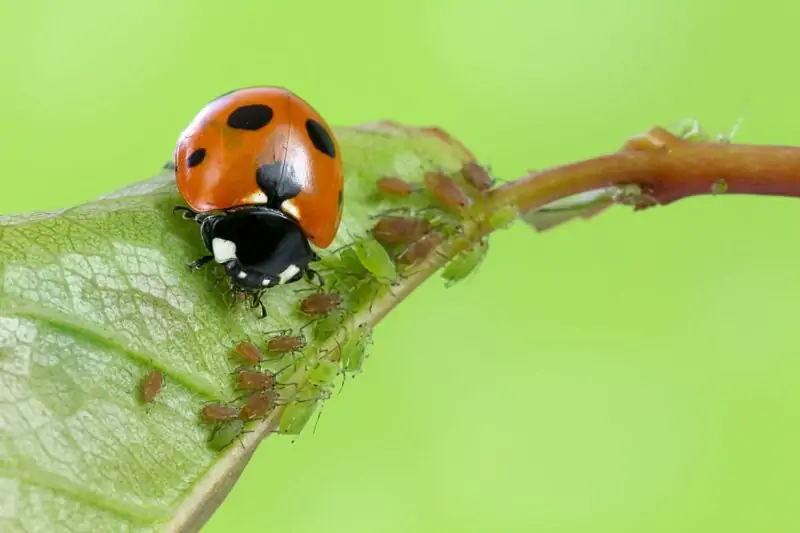
Hello and welcome, green thumbs! We’re about to embark on a fantastic journey, exploring the fascinating world of beneficial insects for the garden. It’s a world full of natural pest controllers, cleanup crews, and even those that pollinate flowers, keeping our gardens healthy and thriving. From bees and beetles to wasps and spiders, our gardens are teeming with tiny helpers that keep everything in balance, even keeping out other insect pests. So, let’s pull back the leaves and take a closer look at these garden superheroes.
Beneficial Insect for the Garden: The Basics
What Does ‘Beneficial Insect’ Mean?
When using this term, we’re referring to those tiny garden dwellers that help us maintain a vibrant and balanced ecosystem in our backyards, working to keep your garden healthy. These insects perform a variety of roles that aid our plants in one way or another. It’s a common thing to see in your garden.
To begin with, many helpful insects are important pollinators. For example, species of insects such as bees flutter from flower to flower, savoring nectar while unintentionally spreading pollen. This act of cross-pollination is crucial for the life cycle of many plants, leading to the formation of fruits and seeds.
Then there are the pest controllers, like lady beetles, assassin bugs, and lacewing larvae. They feed on common garden pests, such as aphids and caterpillars, keeping their populations in check and preventing them from trying to cause damage to our beloved plants.
And let’s not forget about the cleanup crew! Many insects, such as beetles, contribute to breaking down organic matter, aiding in decomposition and helping to enrich the soil. These friends of the gardener are like automatic free fertilizer-producing machines.
The Difference Between a Pest and a Beneficial Insect
It’s important to understand the difference between a pest and a beneficial insect. Essentially, they are insects that cause that harm our plants or create a nuisance. These bad bugs feed on our plants, damage their structures, and can potentially lead to their death.
On the other hand, beneficial insects are the ones that provide advantages to our garden. They either feed on garden pests, aid in pollination, or contribute to the breakdown of organic matter, thus enriching the soil. Hence, while pests in the garden are the villains in our story, beneficial insects are the superheroes! They’re good bugs for your garden.
Bees: The Ultimate Pollinator
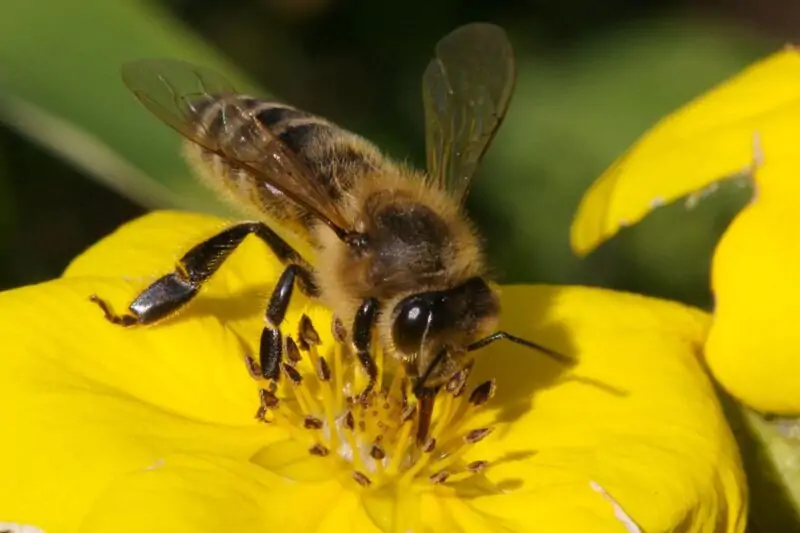
One of the most iconic and common beneficial insects for the garden is bees. They are super important for our gardens, and indeed, our planet. As they visit flowers in search of sweet nectar, they transfer pollen from the male parts of a flower to the female parts. This process, known as pollination, is crucial for fruit and seed production in plants.
But bees don’t just help our plants reproduce. They also contribute to biodiversity by helping native plants thrive and propagate. Furthermore, they produce honey – a sweet delight enjoyed by many. In fact, many of the fruits and vegetables we love and enjoy are available thanks to the tireless work of these buzzing pollinators. Help these beneficial insects by not destroying their hives. Some people go a step further by providing food and shelter to these garden insects to help the plants.
Lacewing: The Green Lacewing Advantage
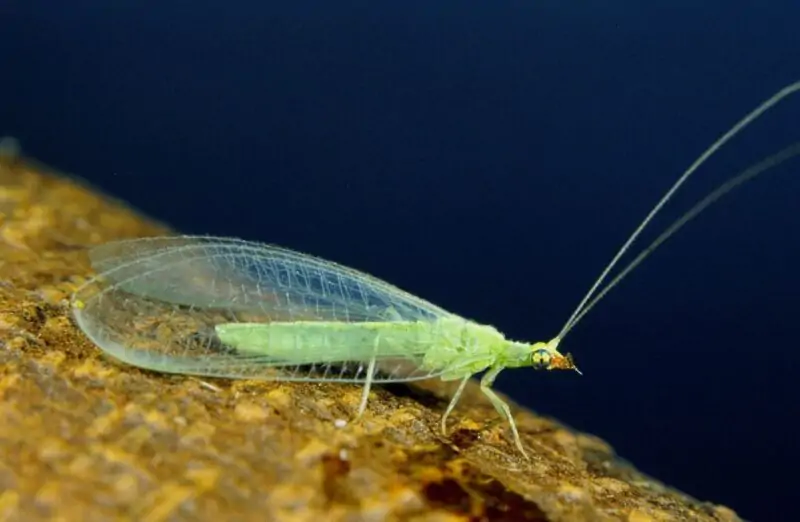
While bees are the ultimate pollinators, green lacewings are one of the top pest controllers. These delicate insects with beautiful, transparent wings might look harmless, but their larvae are known as aphid lions for a reason!
Adult green lacewings feed on nectar, pollen, and honeydew, contributing to pollination. However, their larvae are voracious predators, known to munch on a variety of soft-bodied pests. Aphids, in particular, need to watch out for these mini beasts. An aphid lion can eat aphids in the hundreds in a week! So, these insects are a great natural way to keep pest populations under control.
Lady Beetles: The Cute and Useful Bug
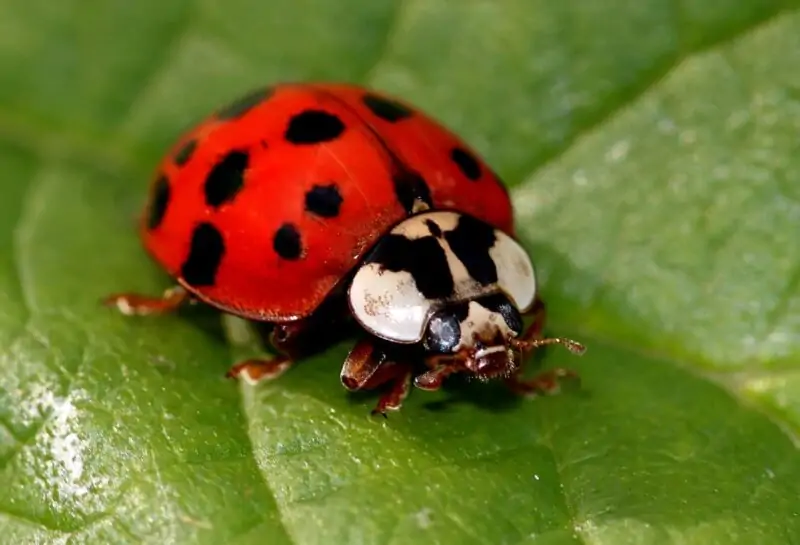
Lady beetles, or ladybugs as they’re often called, are a charming sight in any garden. These tiny creatures with their shiny, spotted bodies are not just attractive; they’re also some of the most efficient pest controllers around.
The adult lady beetles and their larvae feed on soft-bodied insects like aphids, scale insects, and mites, which are notorious for damaging garden plants. A single lady beetle can eat up to 5,000 aphids in its lifetime. Imagine the feast if you have a whole army of these beetles in your garden! Insect pests in the garden won’t stand a chance.
Assassin Bugs: The Unseen Protector
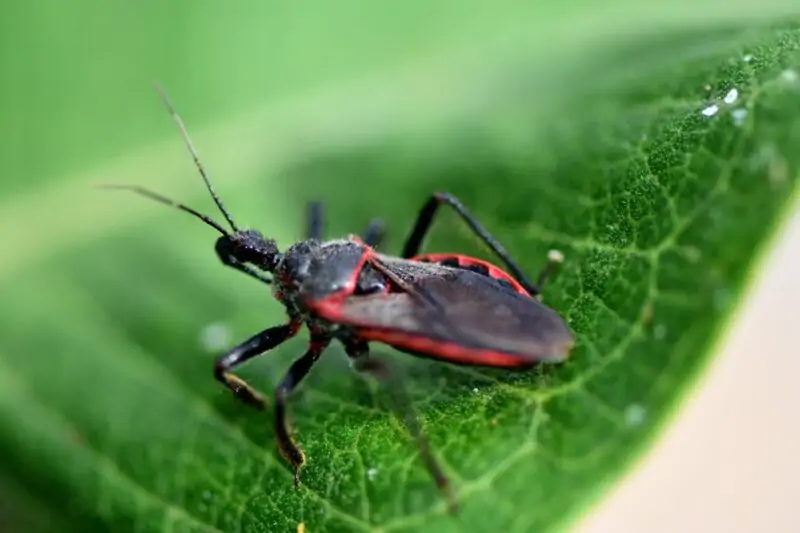
Assassin bugs, the quiet protectors of your garden, are worth their weight in gold. These bugs get their dramatic name from their ruthless hunting skills. They lurk on the plants, patiently waiting for their prey, before striking with speed and precision.
An assassin bug uses its sharp, needle-like mouthparts to pierce its prey and inject lethal saliva. The saliva paralyzes the prey and liquefies its insides, making it easy for the assassin bug to suck out. Their menu includes many pests that are harmful to garden plants, including aphids, caterpillars, and other bugs. So, even though they may look a bit scary, they’re good guys in our garden.
Wheel Bug: The Assassin Bug’s Cousin
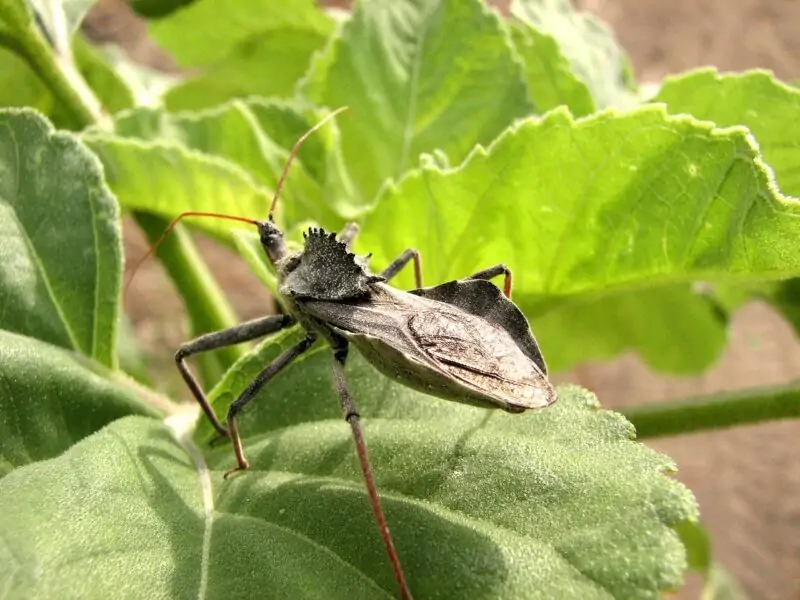
Wheel bugs, part of the assassin bug family, are another fascinating group of beneficial insects for the garden. They are named for the semi-circular crest on their back that looks somewhat like a wheel or cog. These insects go about their business just as ruthlessly as their assassin bug cousins when it comes to hunting pests.
With a diet that includes caterpillars, beetles, and other harmful insects, wheel bugs can contribute significantly to pest control in your garden. Like the assassin bugs, they also use their beak to inject paralyzing saliva into their prey before sucking out the liquefied contents.
Beetles: The Ground’s Cleanup Crew
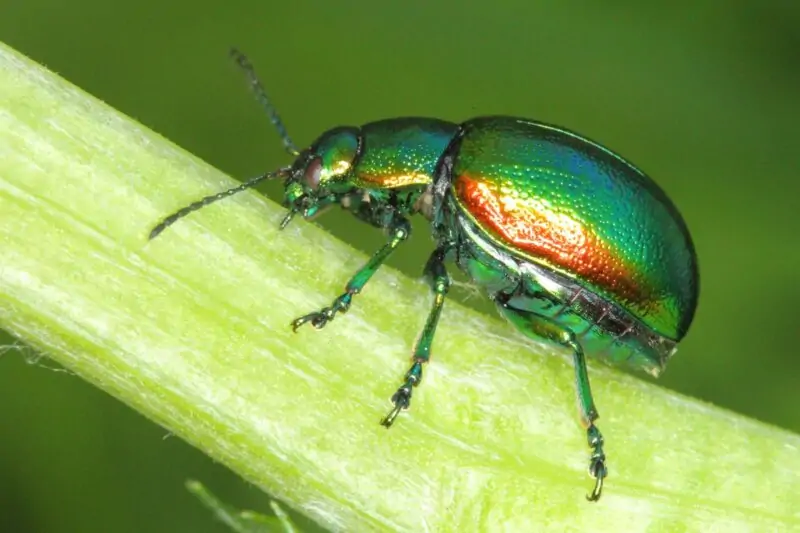
Ground beetles, the nocturnal superheroes of your garden, play a crucial role in maintaining the health of the soil. They are voracious predators that feed on a variety of pests, including slugs, caterpillars, and other small insects. Ground beetles can hunt their prey on plants and on the ground, making them versatile pest controllers.
In addition, beetles contribute to the decomposition process by breaking down organic matter. This process helps enrich the soil, leading to healthier and more productive plants.
Wasps: The Pest’s Nightmare
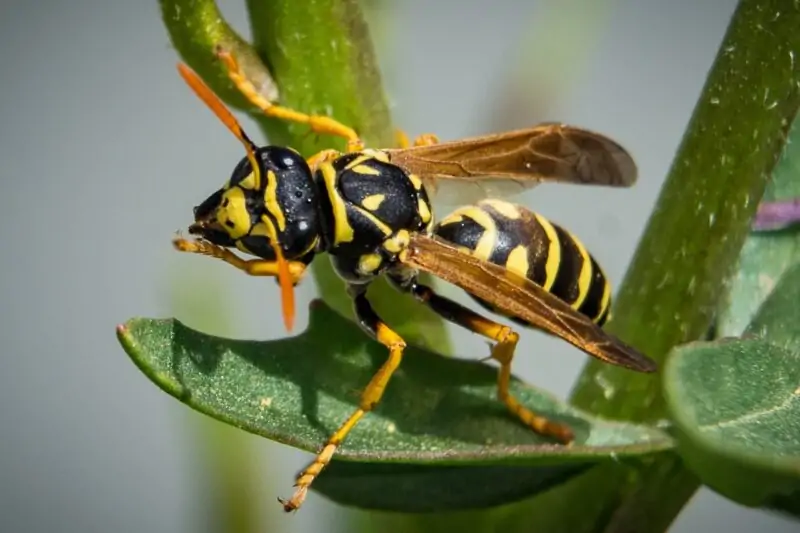
Wasps are often feared for their stings, people often try and squash them for this reason. However, when it comes to gardening, they can be a boon. Many species of wasps are parasitoids as larvae, laying their eggs on or in other insects. When the eggs hatch, the wasp larvae consume their host, gradually killing it. While this may sound a bit gruesome, it is nature’s way of controlling pest populations.
Some wasps also feed on pests, including aphids and caterpillars, making them a helpful ally for gardeners. So, the next time you see a wasp, remember that they’re more than just a picnic nuisance, they feed on feed on insect species to keep your garden clean and green.
Spiders: The Webs of Protection
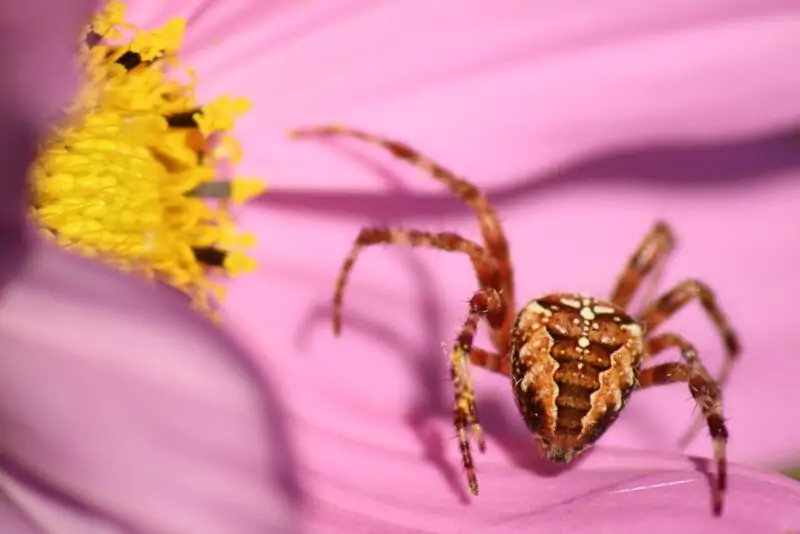
While not technically insects, spiders are an integral part of the natural garden ecosystem. These eight-legged creatures are prolific predators, feeding on a variety of insects, many of which are garden pests.
Their intricate webs are not only a marvel to look at but also serve as effective traps for flying insects. Spiders help keep pest populations in check, and their presence is often a sign of a healthy garden.
Garden Visitors: Occasional Beneficial Bugs
Beyond the regular residents, your garden may also see occasional visits from other beneficial insects. These can include certain species of moths, butterflies, and even certain types of flies. While these might not live in your garden permanently, they can still play significant roles as pollinators or pest controllers.
Butterflies, for instance, are known for their pollination skills. While sipping on nectar, they carry pollen on their bodies from one flower to another, aiding in plant fertilization. Their caterpillars may be a bit of a nuisance, but also provide a source of food for other beneficial insects and spiders
Attracting Beneficial Insects
Creating a Garden Environment for Beneficial Insects
Firstly, it’s about creating a friendly environment. Provide a variety of plants to offer shelter, food, and breeding sites. Mulch can provide a great habitat for ground beetles, while small patches of bare soil can attract certain types of bees. Avoiding pesticides is also crucial, as these can harm or kill beneficial insects.
Plants That Attract Beneficial Insects
Planting a variety of native plants is one of the best ways to attract beneficial insects. Many of these insects have evolved with these plants and are attracted to them. Flowering plants are particularly effective at attracting insects. Many beneficial insects feed on pollen and nectar at some stage in their life cycle.
Certain plants are known to be particularly attractive to specific beneficial insects. For example, plants in the daisy family (like asters, sunflowers, and yarrow) are known to attract lady beetles, while parsley, dill, and fennel can attract assassin bugs.
FAQs
While many bugs are beneficial, not all bugs are good for your garden. Some, like aphids, slugs, and whiteflies, can cause significant damage to your plants. However, a healthy garden ecosystem should include a balance of both beneficial insects and potential pests, keeping everything in check.
In most cases, beneficial insects do not become pests. However, if their population gets too high, there can be problems. For example, lady beetles might bite humans or swarm houses in large numbers when their populations are high.
Planting native plants, providing shelter, and avoiding pesticides is key to attracting beneficial insects. Also, a water source can be an inviting feature for many insects.
Spiders are not technically insects, but they are beneficial for the garden. They are excellent pest controllers, catching and eating a range of insects.
Conclusion
There you have it, my green-thumbed friends. We’ve explored the fantastic world of beneficial insects for the garden, understanding their roles and how they help our plants thrive. From pest control and pollination to breaking down organic matter, these tiny creatures are the real superheroes of our gardens.